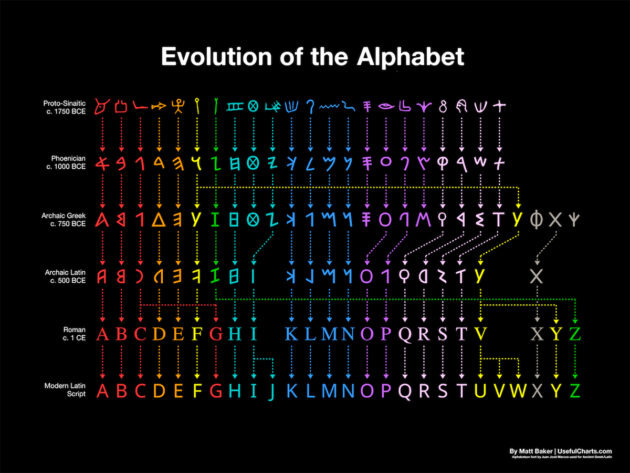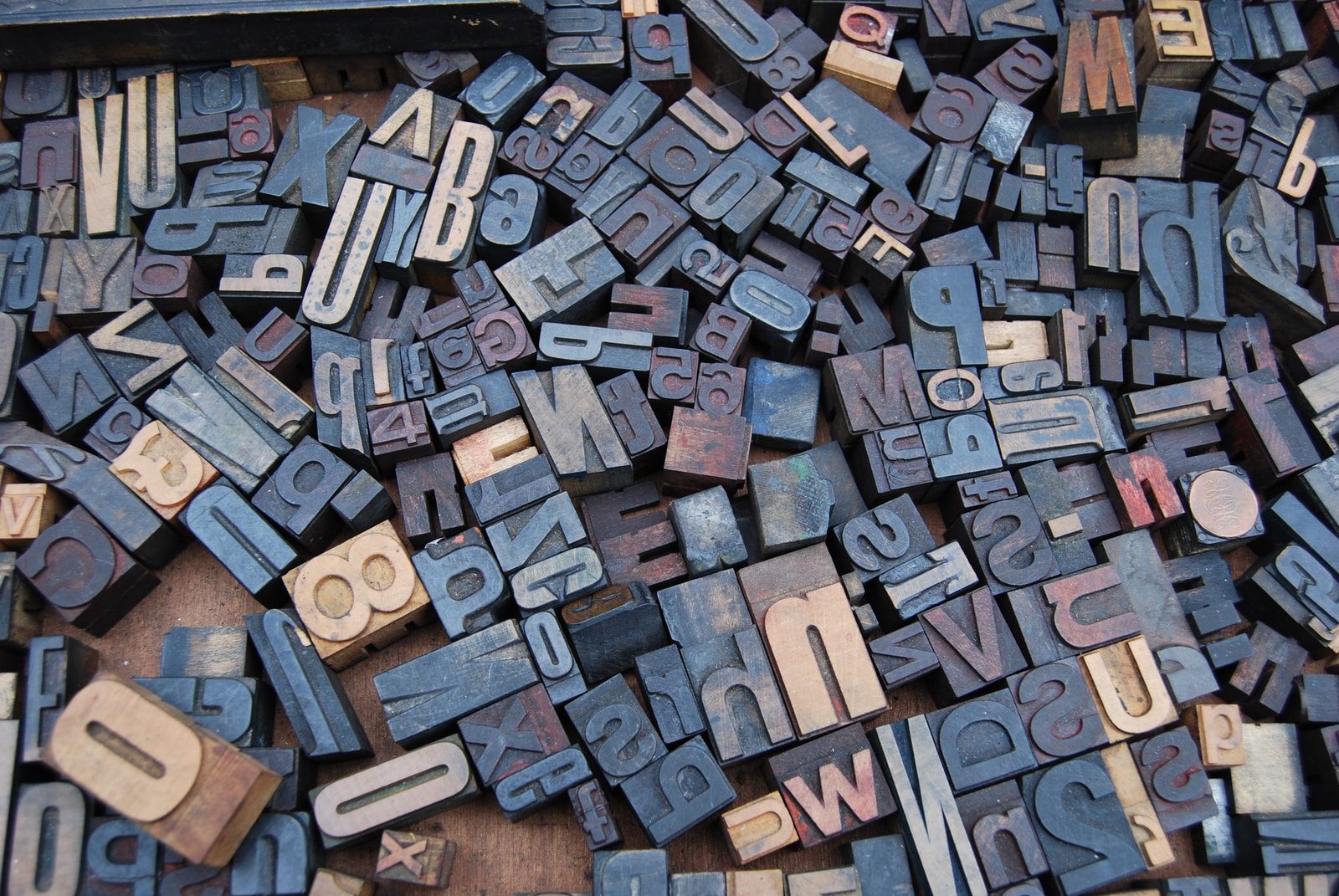Alphabet: it’s one of the first things we teach our children. Even before we teach them that they’re racist (if they’re white) or a victim (if they’re not), and that what they pack in their undies has nothing to do with their “gender”.
“A-B-C-D, E-F-G…”, you’re singing it in your head now (and hopefully saying the correct zed, not the ghastly zee). The Latin alphabet, which forms the basis of written English, is the most widely-used writing script in the world. The second-most widely-used, Chinese, is a logographic script, meaning that each character represents a word, not a sound. Even basic Chinese fluency requires learning about 3,500 characters.
Latin script, with its 26 letters, seems a clear winner. Sanskrit has between 43 and 67 letters. Even Arabic, a cousin of Latin, is only whittled down to 28 letters.
But, if Arabic is a “cousin” of Latin, what is their ancestor?
As far back as the 16th century BC a small group of Mediterranean traders created the foundational script of 22 consonants that became the basis of English, Arabic, Hebrew and many other alphabets.
The Phoenicians lived along the Mediterranean coast in what is now Lebanon. They inhabited a number of different city-states, the most famous of which were Tyre, Byblos, and Sidon. These Phoenician places were often in conflict with each other for domination of the region. Because of this lack of cooperation, the Phoenicians were conquered and forced to pay tribute to the virtually every empire in the region, including the Egyptians, Hittites, Assyrians, Babylonians, Persians, and Greeks.
When the Phoenicians created their new alphabet, they worked from symbols that were already in use among the Semitic-speaking peoples of Canaan and Mesopotamia.
But those scripts, the famous Sumerian and Egyptian writing systems, were, like Chinese, logographic. At best, they were syllabic (much like modern Japanese katakana and hiragana).
The merchants and traders of Phoenicia wanted something that would not be too difficult to learn and would be quick and easy to use. Unfortunately, both the Egyptian and Sumerian writing systems did not meet these criteria very well. They used hundreds of different complex symbols to represent ideas (ideograms) and syllabic sounds (phonograms).
The Phoenicians realized that most words were made up of only a small number of simple sounds. They found that these sounds could be represented in only 22 symbols and their various combinations. In their newly created alphabet, the Phoenicians used symbols or letters only for consonants, although their spoken language did contain vowel sounds. The modern Hebrew and Arabic alphabets, which were directly influenced by the Phoenician one, still do not contain symbols for vowels.
As is almost always the way, trade was the driving force of innovation.
The Phoenicians spread their alphabet through their vast trading network that stretched throughout the entire Mediterranean region. The Greeks adopted it and by the 8th century BC had added vowels. Later, the Romans also used a version of this same alphabet that is virtually identical to the one used today in the English-speaking world.
Ancient Origins
Hence, the “Latin” alphabet used by modern English. The Roman alphabet began as a purely uppercase alphabet (as reflected in modern typefaces like Trajan). Lower-case letters (i.e. “small a” as opposed to “big A”) evolved from Roman cursive writing, especially under the influence of pen-and-ink writing on parchment and paper. Anglo-Saxon runic scripts were eventually replaced by Latin script – disappearing altogether after the Norman conquest.

The evolution of the alphabet can be seen in letters such as “a”. Its ultimate derivation is the word “aleph”, meaning “ox”. Naturally, its original pictograph was an oxen head. That was simplified by the Phoenicians into something resembling an “A” on its side. The Greeks named it “alpha” and rotated it to the familar “A” shape.
The Egyptian hieroglyph “Pr”, meaning “house”, became the Phoenician “bet”, meaning the same. Once again, the pictograph was replaced by a symbol which the Greeks called “beta”, and we know today as “B”.
Aleph, Bet. Alpha, Beta. Alphabet.
Thank the Phoenicians for the fact that this article wasn’t written using thousands of pictographs, but a combination of 26 simple symbols you probably learned before you even started school.
Please share this article so that others can discover The BFD

